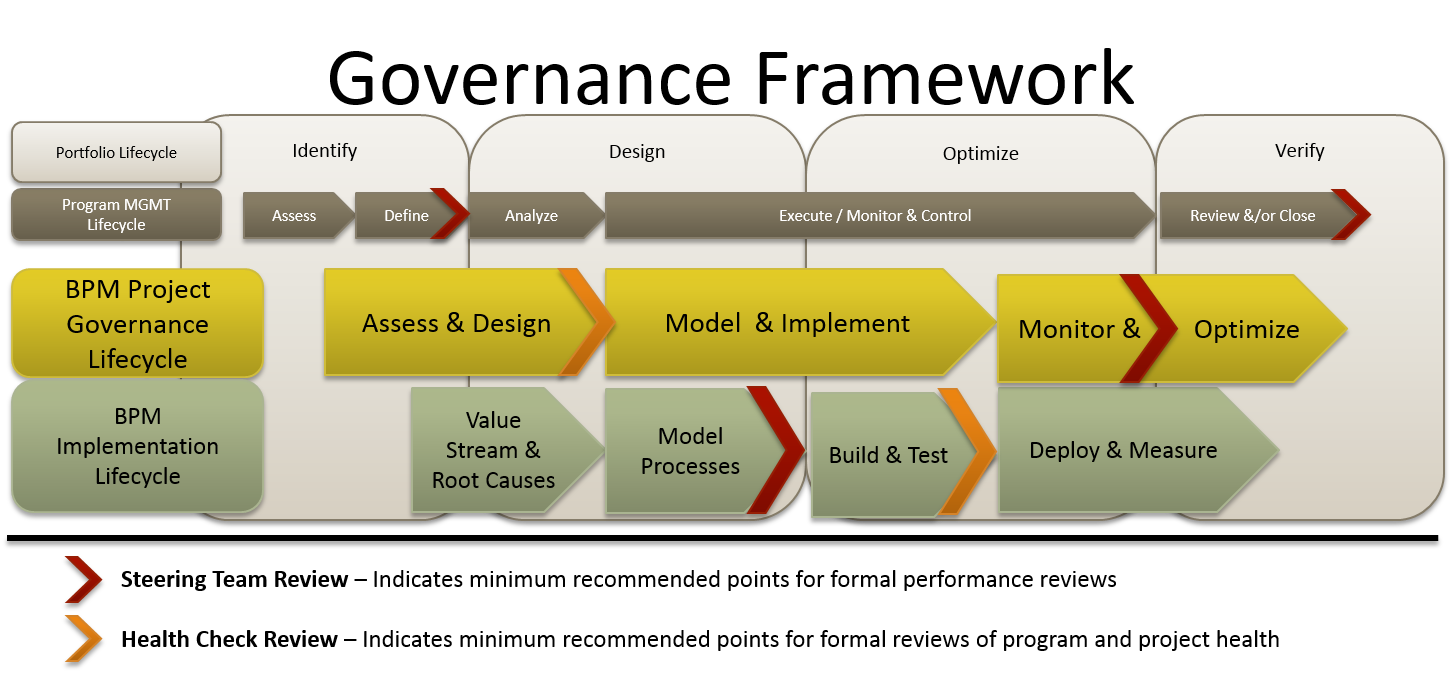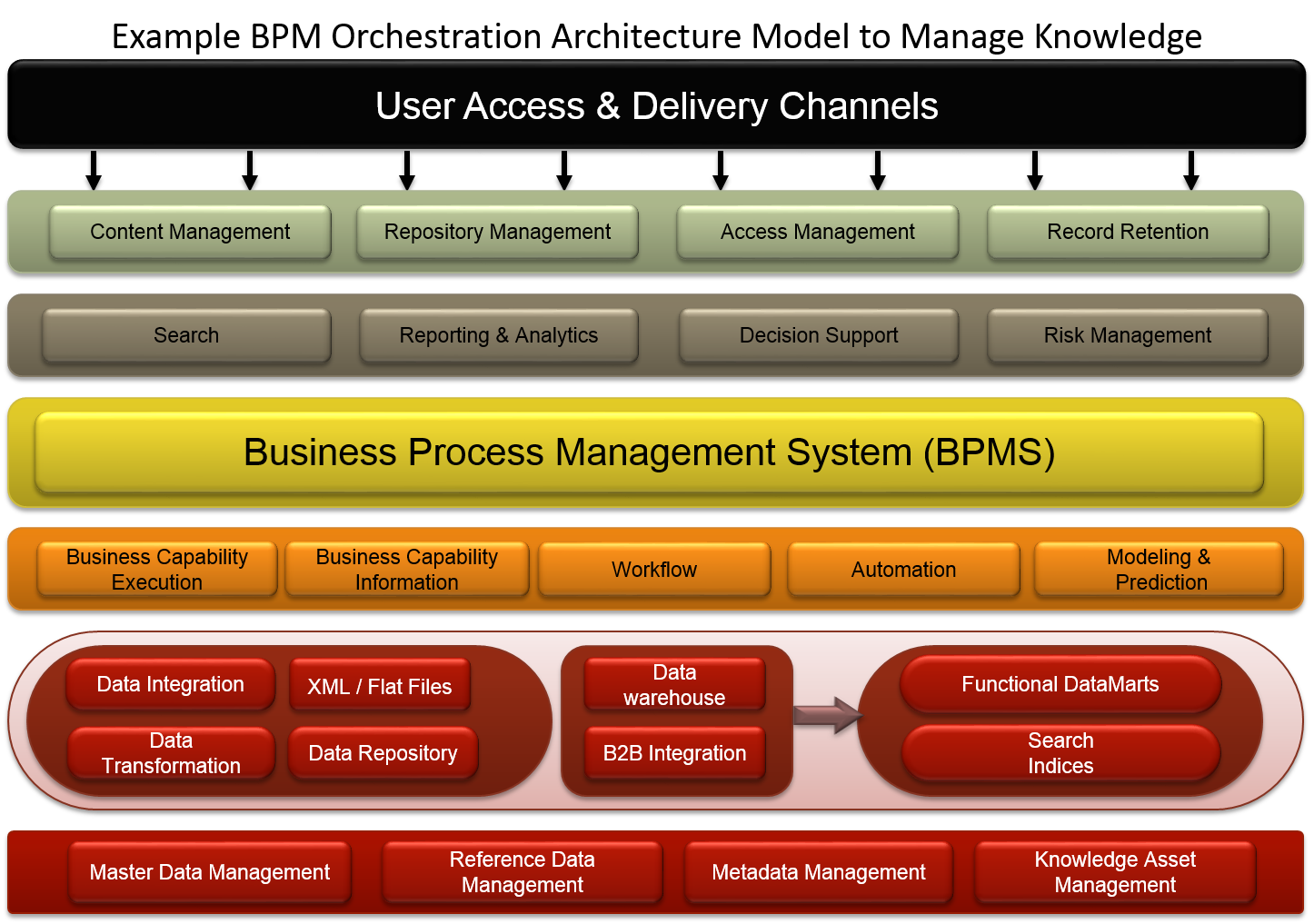Business Process Management
At ArborSys, we have developed a framework and knowledgebase of tools to assist our clients adapt to business change in today’s dynamic global marketplace by applying BPM to improve efficiencies, profitability, and help create competitive advantage.
Practice, Practice, Practice
Business Process Management is practice and something you do on a daily basis. There are lots of interesting tools and techniques that can be leveraged in order to be effective, but it is really about doing things. Things that make you better at the processes that create value for your business. Success requires understanding how to manage the journey from your current state to a new, better state, without losing your way. Great tools can only be effective if you have the experience to overcome the resistance to change. You must provide the confidence you know how to navigate the way forward.
BPM enables organizations to automate, execute, monitor, and continuously improve business processes from beginning to end by connecting people, applications, and data. This is best achieved while leveraging and extending your current IT infrastructure and software assets. Orchestration of processes that cross your current technology and organizational boundaries is a key business architectural principle you must be able to achieve. Orchestration drives new levels of awareness to enable architecting for action for your most complex and less effective capabilities. This will help you create value and implement changes that can significantly improve performance. This comes with practice – iterative, pragmatic ways of doing things that help you move forward toward better managed processes that drive business results.
Making BPM Work

ArborSys is a team of experienced (by practice) people who know your business - and the tools and techniques to leverage to be successful in BPM. Making BPM work for you requires a proven governance framework that you can adopt to continue to be successful after the rollout dust settles. The key BPM disciplines are:
- Architecting Business Capabilities to Processes
- Designing the Orchestration Models
- Implementing Automated Processes to Managing Dynamic Case Management
- Controlling the Results
Governance, done right, enables action and drives results. We have a long history of driving results using the following framework and its supporting techniques.
Governance Lifecycle for Business Change
BPM Project Level Governance (Business Change): Provides the means to identify, prioritize, allocate resource and support achievement of value for implementing business change strategies via the processes within the following stages:
- Assess & Design – Assesses the high level business requirements (a.k.a. CTQ’s), their priority, the measures of success and assignment to the project & Designs the high level approach to meeting the requirements
- Model & Implement – Models and confirms the best approaches required to deliver to the measures of success & Guides the Implementation of the requirements to meet the business objectives
- Monitor & Optimize – Monitors the delivery of the implementation business changes using the controls to measure outcomes & Guides Optimizing performance to meet any gaps in achieving measures of success and / or providing input for future improvement projects

Key BPM Disciplines
Architecting Business Capabilities to Processes
You start by documenting the key things that define your business – the capabilities that at the highest level describe what you need to do to be successful. Then you break these down into the processes you must have to differentiate your way of delivering results to your customers. Once you identify these key end to end processes, then you determine how to measure your performance. Now you are ready to prioritize where you can use BPM to create the best value.
Designing the Orchestration Models
Orchestration is difficult to achieve if you have not identified your capabilities without regard to how you currently operate. Conway’s Law tells us organizations which design systems are constrained to produce designs which are copies of the communication structures of these organizations. You need to design to a set of capabilities and enabling processes that are not tied to how your organization currently operates. ArborSys knows how to help you breakout of this mindset and see how you can use BPM to create the communication and awareness needed across your current department and application boundaries.

Implementing Automation to Dynamic Case Management
Most companies today rely heavily on knowledge workers to deliver a significant amount of value. ArborSys understands the spectrum of activities these workers engage in exist across processes that can be highly automated to work that requires judgement on dynamically changing information sets. Many of these activities require access to and engagement across departmental and systems boundaries. Automation is used to remove drudgery to enable your highly skilled resources to focus on the judgement part of their effort. Dynamic case management is required to support the longer timelines and amounts of varying information needed to deliver a quality result.
Controlling the Results
Implementing is not the end. One needs to have the controls in place to understand how successful your new behaviors are being adopted – and to provide the feedback into the next iteration of improvements to be identified and measured. ArborSys understands how to leverage the tools available within a BPMS to gather this information as well as how to enhance these with metrics that drive success. This is more than just technology as many times you need to develop cost effective, indirect measures in order to understand how well your new processes are working.
ArborSys: Your BPM Orchestration Partner

The practice of BPM requires a partner that can help you develop an achievable vision of your desired business architecture. And, can fully support both your business and technical teams in orchestrating the end-to-end processes needed to be successful. ArborSys is the practiced conductor of BPM orchestration that can help you see your way to an improved future.
